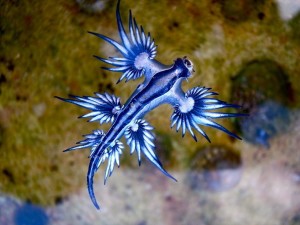Aquatic Antagonists: Indirect Nematocyst Entombment and Acute Allergy Contact Dermatitis triggered by Nudibranchs. It is well-known among divers, swimmers, and beach-goers who coelenterate like such as the Portuguese man-of-war (Physalia physalis). True jellyfish-like ocean anemone and box jellyfish and the true coral, as well as fire corals, can cause painful and fatal stings.
In the end, these species are largely avoided by both humans and marine creatures. However, direct contact with the skin could be a possibility. For instance, coelenterates can release harmful substances into the marine environment which can cause sensitization of swimmers, even when they are not in contact with tentacles that sting.
Subsequent contact with the same substance or cross-reacting with it can trigger a period in the form of extreme skin irritation due to contact allergies. The Portuguese man-of-war, the real jellyfish, the sea anemone authentic coral, as well as flame coral (a hydroid) all, contain nematocysts inside their tentacles. Portuguese men-of-war could have tentacles that are 27 meters long, with up to one million of nematocysts.
In the event of extreme storms, tentacles can separate from the main organism, and then envenom uninitiated people. They can be just as serious as those caused by live jellyfish, particularly in sensitive individuals. Hence, incredibly, stinging nematocysts that coelenterates aren’t feared by the majority. There are a variety of species that use these cells to protect themselves. Particularly, Tremoctopus violaceus, a part of the blanket Octopuses tear tentacles off of P physalis, both for defensive and offensive reasons.
The nudibranchs, sometimes referred to as sea slugs, benefit from stinging nematocysts in a unique and intriguing manner. They actually use nematocysts in the form of outgrowths that grow on the body after eating a portion of Portuguese men-of-war’s tentacles. This article focuses on this nudibranch technique of defense, and how it relates to human the envenomation process. Classification Nudibranchs belong to the Mollusca phylum as well as the class Gastropoda however, unlike other animals belonging to this category they do not have protective shells.
Nudibranchs belonging to the suborder Aeolidina and the family Aeolidiidae are the most interesting in this debate. The term “sea slug,” often used for descriptive purposes does not accurately describe how beautiful these animals are. Some of these creatures have bright colors and transmit an indication of their unpalatableness to predators.
Some are camouflaged to ward off the possibility of predation. Apart from the potential for indirect nematocyst envenomation, the majority of these Nudibranchs release ichthyodeterrents, such as nakafuran-9 or longfin to deter possible attacks by fish. Nudibranch adaptability Aeolid nudibranchs are capable of staying clear of nematocyst-envenomation by coe due to a variety of adaptions.
That includes behaviors that restrict the contact they have with predators, specially vacuolated cells that form a protective layer within the epithelium and a protective cuticle that covers the mouth, and abundant mucous protective secretions that are unique for the prey species of the nudibranch. In addition, the composition and chemical makeup of mucous secretion could change if the kind of prey is unique for the nudibranch.
Ingestion of Envenomation Pathway Once inhaled by the nudibranch part of the stinging nematocyst is left undigested, moves through the digestive tract, and is then absorbed into dorsal as well as lateral outgrowths within the body. These outgrowths are referred to as cerata. Cerata (plural Cerata) is taken from the Greek term keratosis, which means Horn.
The word embodies the protuberances of horns that are visible on the sides and back of the aeolid Nudibranch. After transport to the cerata, the stinging nematocyst gets stored in a sac located at the top of the cerata. It is known as a Cnidosac.
If contact with a potential prey animal or human skin it will release the nematocyst exactly like true coelenterate sting, and release its poison. The two species of Nudibranchs specifically, Glaucus atlanticus and Glaucilla marginata, feed on tentacles in the Physalia species.
The appearance of human beings who have been in an encounter with these species of nudibranchs is like Portuguese man-of-war envenomation but without the usual long, linear wheals that are typically observed in hydroid stings. Contact dermatitis with an allergic reaction is characterized by erythema and burning Urticarial papules, the possibility of creation of vesicle, and postinflammatory hyperpigmentation once the sting has been removed.
Treatment of stings includes powerful cooling compresses, topical steroids, and antihistamine treatment. A jellyfish sting protection lotion is readily available in local dive shops and advertised to prevent the possibility of envenomation by stings from a different coelenterate. It is possible that this lotion could assist in preventing indirect stings.
Despite the various strategies developed by nudibranchs in order to protect themselves from predation, mollusks that do not have protected shells aren’t free of risk. Sea slugs can be prey to other carnivorous species of nudibranchs as well as a variety of fish, including puffer and wrasse fish as well as a variety of crabs sea spiders, the nemertine, and nemertine worms.
Like the Portuguese man-of-war, true jellyfish, and coelenterates, the aeolids are best left to visual admiration, not touching. The introduction of stinging nematocysts inside ceratas of nudibranchs is among the most unique ways of survival and adaptation in this animal world.

(Cerberilla ambonensis). Note the hornlike cerata on the
dorsal aspect of the organism. Photograph courtesy of
Gary Cobb, PhD, Cofounder, www.nudibranch.com.au.

courtesy of Alexander Semenov, BS, MV Lomonosov
Moscow State University, Russia.


this photograph, albeit this species would be difficult to
see in the marine environment (Anteaeolidiella indica).
Photograph courtesy of Gary Cobb, PhD, Cofounder,
www.nudibranch.com.au.